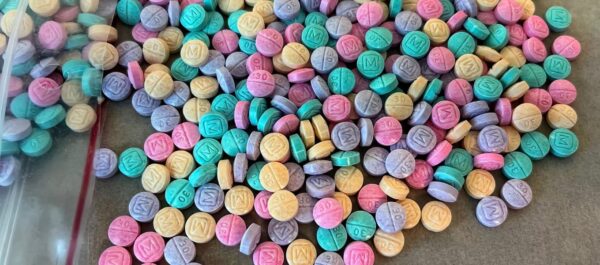Dr. William Goldman, medical director of the Addiction Services Program at Akron Children’s, helps make sense of what parents are hearing about rainbow fentanyl.

What is fentanyl?
When we talk about the fentanyl, specifically with what we’re seeing in our communities, first, it’s not what we call medical grade. It hasn’t gone through the process of being refined and dosed correctly. Currently, what we’re dealing with is a epidemic of fake Percocets and oxycodone and fake pills. The Drug Enforcement Agency is now running a campaign called One Pill Could Kill, because what we know is about four out of every 10 fake pill has a lethal dose of fentanyl in it.
What is rainbow fentanyl?
The rainbow fentanyl has come on the radar. Starting in about August, the DEA started informing us that this had come onto the streets. So, we knew there were colors out there. The new movement was into fake pills, and they’re still making the fake pills that look like Percocets and oxycodone, but now they’re letting it be colored, just like the fentanyl is.
People who struggle with an opioid use disorder already know what they’re buying on the street. The concern is how this affects children and younger generations. What we’re really concerned about is, we’ve seen now where Drug Enforcement has been called to local schools, junior highs, where these kids have these fake pills and they find out they’re fentanyl pills. Alternatively, many kids, because they’re multi-colored or bright-colored, can accidentally get into them, thinking that they’re candy, which even as we’ve dealt with things like marijuana and edibles, we’ve seen an increase in emergency room visits related to what kids thought were their parents’ candy and then it’d be drug-infused candy.
How can parents talk to kids about this?
I think it’s about honesty. I think it’s saying, “Look, we know this is happening in our communities. We need to be aware that if you don’t recognize something, don’t just take it. Don’t assume someone’s giving you a Tylenol. You should only trust medications that you yourself have been prescribed from either your doctor or given to you by your parent, that you shouldn’t take other people’s prescriptions.” Honestly, I tell even my patients, I say, “You can’t believe anything’s real anymore. If you think you’re getting something that you consider safe, you need to be skeptical when you’re looking at it.”
What should parents do with medications they have at home?
Most of the medications or the drugs that kids get into are already in our house, they’re supplies that we haven’t discarded from previous procedures or prescriptions. I would just remind people, Oct. 29 is National Take Back Day. It’s an opportunity to go look in your communities and see where you can go, local firehouses, police stations. Even here, at Akron Children’s, we have a disposal box to drop off your medications.











